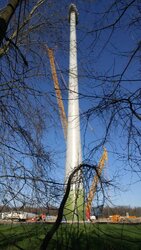Highbeam
Minister of Fire
I think you made my point. Reduce the potential of having the same peak demand among a population of users and the need for a more robust distribution system disappears. Users of electricity have been living in a culture of unlimited power availability without need for conservation. Change the culture and the need for capacity in the distribution system diminishes. Fewer substations, lower transmission line voltages, less robust poles and smaller ROW's, less generation capacity, etc. No need for that new nuclear or coal plant to be funded by charges for generated power. In fact, an ability to retire without replacing aged generating facilities.
A complimentary point actually. You are approaching the question from a theoretical possibility and I am explaining the current state of affairs.
I will agree that if every homes meter was limited to 100 amps instead of 200 amps that some trivial amount of money could be saved on wire size and more could be saved on generating capacity. Same number of substations, same voltages, same poles, same ROW, but less generation capacity and possibly smaller wires.
We already do this to some extent. You can buy a 100 amp meter, 200 amp meter, or 320 (might be 360 I forget) sized meter for your residence. The huge majority are 200 amp meters. The "delivery" charge is the same regardless so there is very little reward for limiting yourself to a smaller peak demand. A higher fixed base rate would make sense for a larger meter.
The point of this thread is that so much of the utility's revenue is directly tied to consumption that a drop in that consumption makes it impossible to cover the fixed costs of keeping the delivery system available. The variable cost of power tied to that actual consumption by the consumers is a very small part of the revenue requirements. In an effort to reward conservation and be fair, the billing system heavily depends on consumption which creates a shortfall when people actually conserve.
Don't fool yourself, the utility does NOT want you to conserve. Their business is selling power. If you do conserve then they will necessarily raise rates per unit of power or raise the portion of the bill that is fixed in an effort to remain "whole" and pay their bills. The regulating body of utilities in the US approves rate hikes and the necessary/customary utility profit margin is sufficient reason to raise rates. It's a rigged game on purpose. The utility business is not risky which is why so many of us invest in utilities for the steady (though lower) returns.



